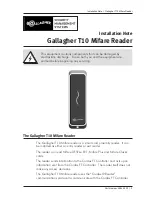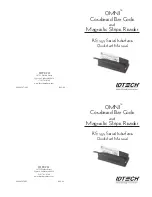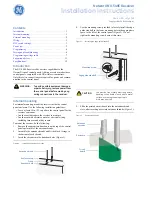
5
6
CQ-VX100U
English
Installation
(continued)
❏
Before Installation
Warning
¡
Do not install the monitor in a location which
obstructs driving, visibility or which is prohibited
by applicable laws and regulations.
If the monitor
is installed in a location which obstructs forward
visibility or operation of the air bag or other safety
equipment or which interferes with operation of the
car, it may cause an accident.
¡
Never use bolts or nuts from the car's safety
devices for installation. If bolts or nuts from the
steering wheel, brakes or other safety devices are
used for installation of the monitor, it may cause an
accident.
¡
Attach the wires correctly. If the wiring is not cor-
rectly performed, it may cause a fire or an accident.
In particular, be sure to run and secure the lead
wire so that it does not get tangled with a screw or
the moving portion of a seat rail.
¡
Use with 12 V DC negative ground car. This unit is
only for use with a 12 V DC negative ground car. It
cannot be used in large trucks or diesel cars which
are 24 V DC cars. If it is used in the wrong type of
car, it may cause a fire or an accident.
❏
Required Tools
You’ll need a screwdriver and the following:
12 V DC
Test Bulb
Electrical
Tape
Side-Cut
Pliers
Caution
¡
Use the specified fuse. Be sure to always use the
specified fuse. If a fuse other than the specified
fuse is used, it may cause a fire or an accident.
¡
Do not damage the cord by pinching or pulling it.
Do not pull or damage the cord. If the cord is not
treated properly, it will short out or be severed
and may cause a fire or an accident.
❏
Dashboard Specifications
❏
Identify All Leads
The first step in installation is to identify all the car wires
you’ll use when hooking up your LCD monitor.
As you identify each wire, we suggest that you label it
using masking tape and a permanent marker. This will
help avoid confusion when making connections later.
Note:
¡
Do not connect the power connector to the display
unit until you have made all connections. If there
are no plastic caps on the hooking wires, insulate
all exposed leads with electrical tape until you are
ready to use them. Identify the leads in the follow-
ing order.
Power Lead
If your car has a radio or is pre-wired for one:
Cut the connector wires one at a time from the plug
(leaving the leads as long as possible) so that you can
work with individual leads. Turn the ignition on to the
accessory position, and ground one lead of the test bulb
to the chassis.
Touch the other lead of the test bulb to each of the
exposed wires from the cut radio connector plug. Touch
one wire at a time until you find the outlet that causes the
test bulb to light.
Now turn the ignition off and then on. If the bulb also
turns off and on, that outlet is the car power lead.
If your car is not wired for an audio unit:
Go to the fuse block and find the fuse port for radio
(RADIO) accessory (ACC) or ignition (IGN).
THICKNESS
MIN. 4.75 mm {3/16
”
}
MAX. 5.56 mm {7/32
”
}
53 mm {2-3/32
”
}
182 mm {7-5/32
”
}







































